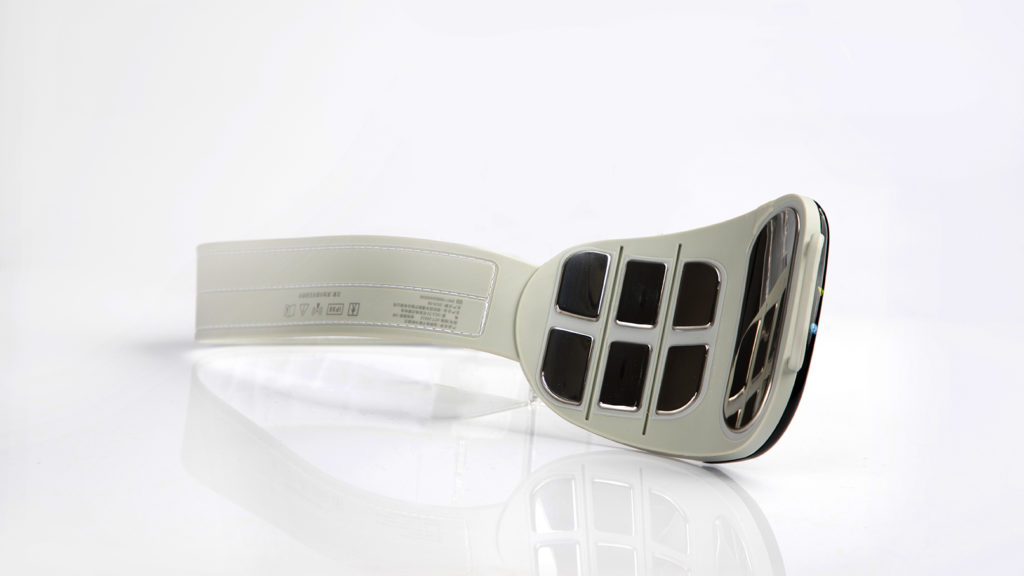Helping patients with neurological conditions walk again, XFT’s fourth generation ‘foot drop’ device showcases some first-of-a-kind technologies, including integrated electrodes moulded right into the strap in an all-in-one design.
Designed with agency Industrial Design Consultancy (IDC), which worked on the second and third generations of the foot drop device – with the previous version being the thinnest wearable device available – IDC worked hard to develop a solution that would work universally on either left or right legs.
The foot drop device works by delivering electrical pulses to counteract the effect of the dropping of the foot due to nerve damage or leg muscle paralysis. By stimulating the fibula and anterior tibia nerves so muscles raise the foot at the appropriate time, it helps train the patient to restore neurological motor function.
This works in combination with an integrated gyroscopic sensor, which detects the walking rhythm and helps regulate a normal walk.
Unlike previous generations of the product, the G4 was designed to be used in a hospital as a multi-patient device, meaning it needed to be waterproof, easy to clean and adaptable to all sizes and shapes of legs.
IDC’s team initially spent time researching products and users to gain insight into the needs of users, while also working with medical staff in hospitals to understand all elements of product use and medical requirements.
With wide variation in the size of people’s legs and calf profiles, IDC explain that it was challenging to develop an electrode solution that took account of different nerve positions, with electrode development a key focus of the project.
The team worked with XFT to gather test data about the effectiveness of various electrode positions on different shaped legs. This data was then used to map nerve areas so a universal electrode shape could be defined.
Once a concept was developed, it was tested and refined using rapid prototyping, to ensure the optimum shape and position of the electrodes.
Another key element of the development was wearability and comfort, and the team had to find the best materials and structural solution, as well as ensuring easy cleaning for medical staff. After researching materials, TPE was chosen for the device, but the stainless steel electrodes would not bond easily with TPE, so an innovative structure was developed with a semi-flexible PP substrate.
This allowed the electrodes to flex and maintain electrical contact while integrated into the TPE.
The manufacturing process required to achieve this was quite complex, with stainless steel pressings over-moulded into a six-electrode semi-flexible array, which was then over-moulded by a unibody elastomer strap.
A user-interface was incorporated into the device which was designed to automatically flip 180° according to which leg the user was wearing it on.
User friendliness was also enhanced by a simple solution to tighten the strap single-handedly.

IDC at DEVELOP3D LIVE
Nick Chubb, Lead Industrial Designer at IDC, will be presenting at DEVELOP3D LIVE on 16 April in Sheffield as part of our Product Development talks.
To find out more about his talk, or to grab your free tickets to this amazing event, then head over to the website here.






